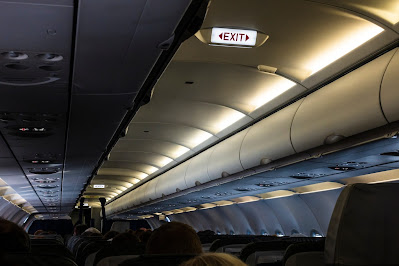Welcome back to the Come Monday Travel Blog, and another dive into our "Travel Terms and Knowledge" series! Today, we're setting sail into a topic that's increasingly important for responsible tourism: how cruise ships, particularly industry leader Royal Caribbean, are making significant strides in reducing food waste.
For years, the sheer volume of food consumed on a cruise ship, with thousands of guests and crew members enjoying multiple meals a day, has raised questions about sustainability. However, the cruise industry has been actively implementing innovative solutions, moving far beyond the days of simply discarding leftovers.
The Challenge of Food Waste at Sea
Imagine a floating city, complete with multiple dining venues, buffets, and specialty restaurants. The logistics of feeding thousands of people on a daily basis are immense, and historically, this has led to a considerable amount of food waste. From over-prepared buffets to uneaten plate scraps, the challenge has been multifaceted.
However, recognizing the environmental and economic implications, cruise lines are now charting a course toward more sustainable food management.
Royal Caribbean: A Pioneer in Waste Reduction
Royal Caribbean Group, encompassing brands like Royal Caribbean International and Celebrity Cruises, has emerged as a frontrunner in tackling food waste. Their approach is comprehensive, focusing on prevention, innovative processing, and responsible disposal.
Here's how they're making a difference:
"WIN on Waste" with AI: One of Royal Caribbean's most significant initiatives is their "WIN on Waste" program, which leverages Artificial Intelligence (AI). This cutting-edge system analyzes various data points, including guest demographics, itinerary, and even weather patterns, to accurately predict how much food should be produced, prepped, thawed, and ordered for a given day. By optimizing inventory and meal planning, they're significantly reducing unnecessary waste before it even occurs.
Precision Preparation and Portion Control: Beyond prediction, Royal Caribbean is implementing meticulous practices in the galley. Recipes are strictly adhered to, and cooking methods often involve "À la Minute" preparation (cooking smaller batches as needed) to minimize surplus. Buffet services have also seen adjustments, moving away from large plates and trays to encourage more mindful serving and reduce "plate waste."
Crew Education and Engagement: The crew plays a vital role in waste reduction. Royal Caribbean trains all crew members on best practices through programs like "Save the Waves." Awareness campaigns, including posters in crew dining rooms, reinforce the value of food and encourage efficient practices. A dedicated onboard food waste role monitors and trains crew members, ensuring consistent efforts.
Onboard Processing Power: When waste is unavoidable, Royal Caribbean employs advanced onboard processing facilities. This includes:
Biodigesters: Many ships are equipped with biodigesters that naturally break down organic food waste into a liquid slurry, which can then be safely managed and discharged in compliance with international regulations (typically far from land).
Waste-to-Energy Systems: On their newest ships, like Icon of the Seas and Silver Nova, Royal Caribbean is pioneering the cruise industry's first waste-to-energy plants at sea. These innovative systems convert solid waste, including some food waste, directly into synthesis gas (syngas) that can be used to power ship operations. This not only reduces waste volume but also generates clean energy.
Green Hubs and Shore-Side Partnerships: Royal Caribbean has developed a "Green Hub" program, a network of partnerships with local waste facilities in strategic ports. This ensures that any waste offloaded ashore is properly recycled or repurposed, diverting millions of pounds from landfills. They work with over 30 ports globally to ensure responsible disposal.
The Broader Cruise Industry's Commitment
Royal Caribbean isn't alone in this endeavor. The cruise industry as a whole is increasingly committed to sustainability, with many lines adopting similar strategies:
Data-Driven Approaches: Many cruise lines are investing in data analytics and AI to optimize food procurement and preparation, minimizing overproduction.
Donation Programs: Some cruise lines are partnering with food banks and local organizations in port communities to donate surplus edible food, redirecting it to those in need.
Technological Advancements: From advanced macerators and dehydrators to sophisticated biodigesters, cruise ships are continually upgrading their onboard waste management systems.
How Guests Can Be Food Waste Warriors at Sea (and Beyond!)
While cruise lines are doing their part, guests also have a significant role to play in minimizing food waste. Every small action adds up! Here's how you can be a more responsible traveler when it comes to food:
Be Mindful at the Buffet: Buffets are a highlight for many, but they can also be a major source of waste. Instead of piling your plate high, start with smaller portions. You can always go back for more! Take only what you know you'll eat.
Don't Over-Order: In specialty restaurants or main dining rooms, it can be tempting to try everything on the menu. While it's great to explore, be realistic about your appetite. If you're unsure, ask your server about portion sizes.
Communicate Dietary Needs: If you have allergies, intolerances, or simply don't like certain ingredients, communicate this clearly to the staff. This helps them prepare meals that you'll enjoy and prevent uneaten dishes.
Use Water Dispensers (Responsibly): Many ships offer water dispensers. While convenient, avoid filling large cups only to take a few sips and discard the rest. Take only what you need.
Think Before You Grab: Those tempting snacks and treats available throughout the day are great, but consider if you're truly hungry before taking something you might not finish.
Educate Yourself and Others: Learn about the ship's sustainability initiatives and encourage your travel companions to be mindful of their food choices as well.
The journey toward a truly sustainable cruise experience is ongoing, but the progress made in food waste reduction is a testament to the industry's commitment. By embracing innovation, educating crew, and collaborating with shore-side partners, cruise lines like Royal Caribbean are not just offering incredible travel experiences, but also striving to protect the oceans and communities they visit. And by making conscious choices as guests, we can all contribute to a greener voyage for everyone.
What are your thoughts on these initiatives? Have you noticed any sustainability efforts on your recent cruises? Share your insights in the comments below!


































